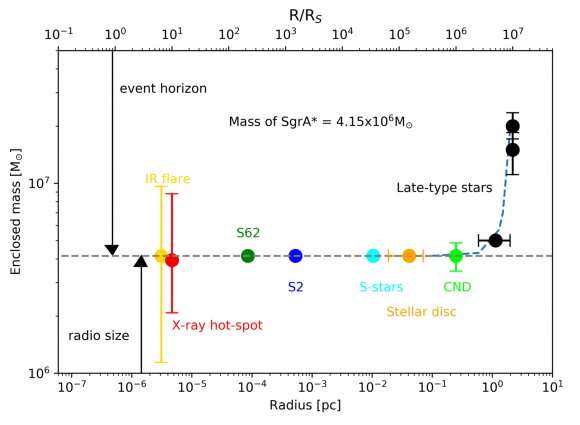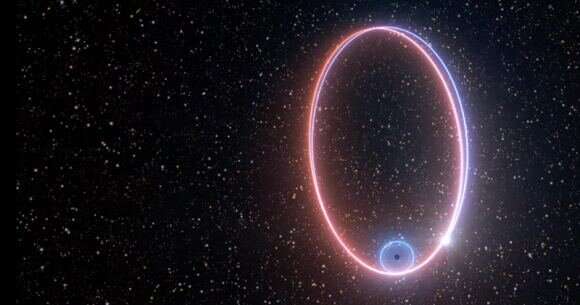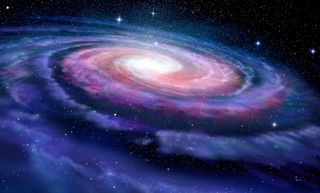Humans are used to keeping time by measuring Earth's movement relative to the sun. But while Earth's trips around its star are noteworthy to life on our pale blue dot, that journey is pretty insignificant when compared with the epic voyage that carries the sun — and our entire solar system — around the center of the Milky Way.
Orbiting the Milky Way galaxy just once takes the sun approximately 220 million to 230 million Earth years, according to Keith Hawkins, an assistant professor of astronomy at the University of Texas at Austin.
In other words, if we were to measure time by this galactic "clock," Earth would be about 16 years old (in galactic, or cosmic years), the sun would have formed about 20 years ago, and the universe would be just about 60 years old.
Related: Does the sun rotate?
The solar system's journey around the galaxy resembles Earth's orbit around the sun. But rather than orbiting a star, the sun circles the supermassive black hole that lies at the center of the Milky Way and exerts a tremendous amount of gravity on everything in the galaxy, Hawkins said.
"The sun is moving with enough speed — about 230 kilometers a second, about the equivalent of 500,000 miles per hour — that it continues to revolve around the center of the galaxy in sort of a circle" instead of getting pulled toward the black hole, he said.
Our place in the galaxy
Compared with an Earth year, a galactic year represents time on a grand scale — but it's not a consistent measurement across the galaxy. What we Earthlings call a galactic year is specific to Earth's place in the Milky Way's spiral.
"We would say that a galactic year is 220, 230 million years. Other stars in the galaxy, their galactic year is different," Hawkins said.
The galaxy is about 100,000 light-years across, and the Earth is about 28,000 light-years from its center. "If you imagine the galaxy as a city, the Earth is somewhere near the suburbs," Hawkins explained. For stars that orbit close to the black hole — the center of the "city" — a galactic year is relatively short. Out in the "suburbs," where our solar system lies, "the galactic years are a little longer," he said.
Similar rules control variability in the length of a year between planets. For instance, Mercury, the innermost planet in our solar system, makes a complete orbit around the sun in about 88 Earth days. Uranus, the seventh planet from the sun, orbits the sun every 84 years, by Earth standards. And the distant dwarf planet Pluto takes 248 Earth years to finish one orbital cycle.
While the physics of planetary orbits are similar to the mechanisms that shape the orbit of our solar system around the Milky Way, it's worth asking how astronomers have figured out the span of a galactic year. Hawkins says that it's actually pretty basic science that became clear in the early days of modern astronomy.
"It's mostly about watching stars move around the galaxy," he said. "You can watch stars move around the galaxy and deduce from the speed and direction of other stars."
Originally published on Live Science.
Самая быстрая звезда, которую когда-либо видели, движется со скоростью 8% от скорости света


В центре нашей галактики сотни звезд вращаются вокруг сверхмассивной черной дыры. Большинство из этих звезд имеют достаточно большие орбиты, поэтому их движение описывается ньютоновской гравитацией и законами движения Кеплера. Но некоторые вращаются так близко, что их орбиты могут быть точно описаны только общей теорией относительности Эйнштейна. Звезда с самой маленькой орбитой известна как S62. При ближайшем приближении к черной дыре она движется со скоростью более 8% от скорости света.
Сверхмассивная черная дыра нашей галактики известна как Стрелец A * (SgrA *). Это масса около 4 миллионов солнц, и мы знаем это благодаря звездам, вращающимся вокруг нее. На протяжении десятилетий астрономы отслеживали движение этих звезд. Вычислив их орбиты, мы можем определить массу SgrA *. В последние годы наши наблюдения стали настолько точными, что мы можем измерить больше, чем массу черной дыры. Мы можем проверить, верно ли наше понимание черных дыр .
Наиболее изученная звезда, вращающаяся вокруг SgrA *, известна как S2. Это яркая голубая гигантская звезда, которая обращается вокруг черной дыры каждые 16 лет. В 2018 году S2 максимально приблизился к черной дыре, что дало нам возможность наблюдать эффект относительности, известный как гравитационное красное смещение. Если вы подбросите мяч в воздух, он замедлится по мере подъема. Если вы направите луч света в небо, свет не замедлится, но гравитация заберет часть его энергии. В результате луч света становится смещенным в красную сторону, когда выходит из гравитационного колодца. Этот эффект наблюдали в лаборатории, но S2 дала нам возможность увидеть его в реальном мире. Конечно, при близком приближении свет S2 сменился на красный, как и предполагалось.
-

Орбитальная прецессия звезды около сверхмассивной черной дыры. Предоставлено: Луис Кальсада / ESO. -

Имитация того, как S2 движется так быстро, что у него красное смещение. Предоставлено: ESO / M. Kornmesser
В течение многих лет считалось, что S2 является ближайшей звездой к SgrA *, но затем была открыта S62. Как недавно обнаружила группа ученых, эта звезда примерно в два раза массивнее Солнца, которая вращается вокруг черной дыры каждые 10 лет. По их расчетам, при максимально близком приближении его скорость приближается к 8% скорости света. Это так быстро, что в игру вступает замедление времени . Час на S62 продлится около 100 земных минут.
Из-за своей близости к SgrA *, S62 не следует по кеплеровской орбите. Вместо того, чтобы быть простым эллипсом, он следует за движением спирографа, при котором его орбита прецессирует около 10 градусов с каждым циклом. Такая релятивистская прецессия впервые наблюдалась на орбите Меркурия, но только как небольшой эффект.
Осенью 2022 года S62 еще раз приблизится к SgrA *. Это должно позволить астрономам проверить эффекты теории относительности даже более точно, чем близкое приближение S2.
 1 New Concepts in Science*
1 New Concepts in Science*

